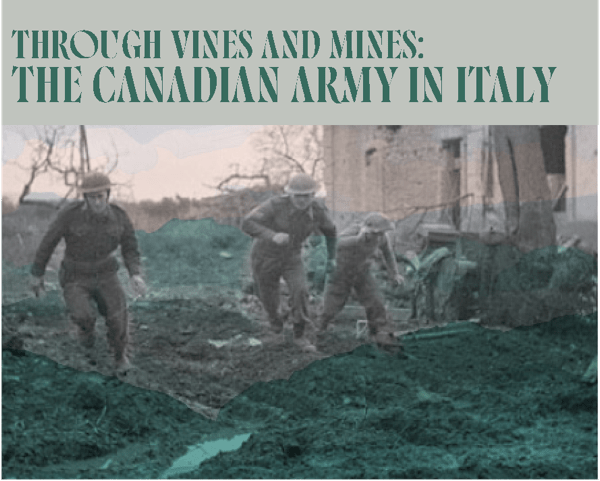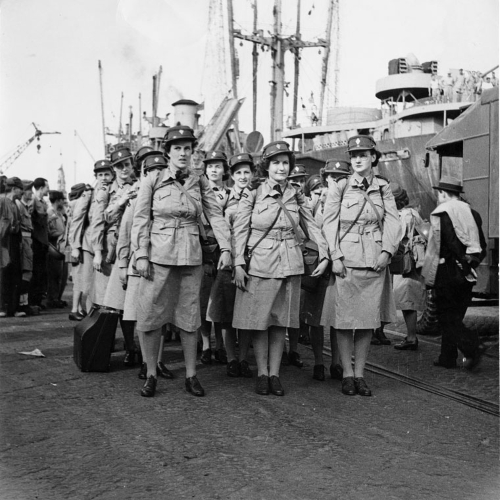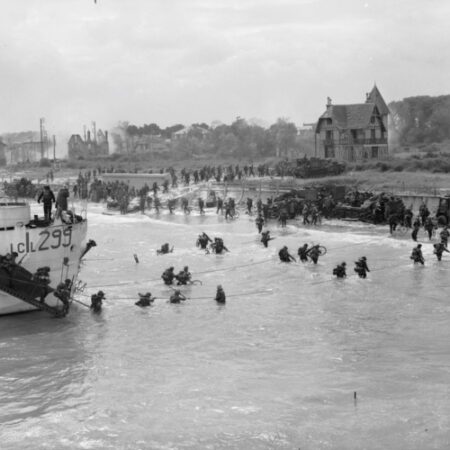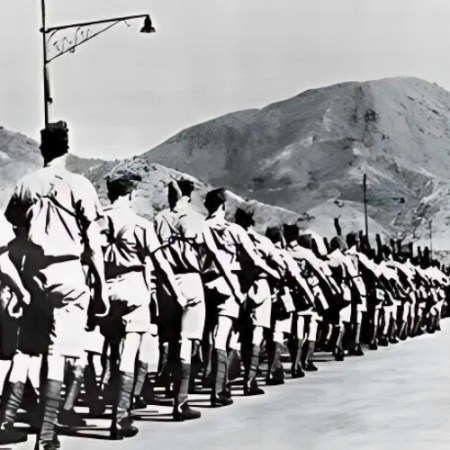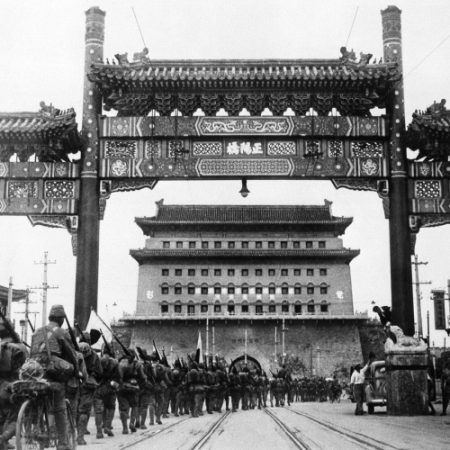A native of Toronto, Cynthia Oakley was one of many Canadian women who enlisted in the Canadian Army Women’s Service during World War II. Through her service in Canada and Europe, she paved the way for women to play a greater role in the military.
When World War II broke out, Canadian women were eager to help but had few opportunities to do so. Toronto resident Cynthia Oakley, however, was determined to do her part. At the beginning of the war, England offered more opportunities for women to enlist. Indeed, in 1938, the British Army founded the Auxiliary Territorial Service, which allowed women to participate in military affairs in non-combat roles. When war was declared, Oakley booked a ticket on one of the last ocean liners crossing the Atlantic and eventually found work as a secretary at the Canadian Military Headquarters. According to a newspaper article from the time, she was still in that position as of September 1942.
A month earlier, on August 19, 1942, Canada took part in the Dieppe raid: one of the greatest military disasters in its history. Oakley’s brother, Captain Rupert, was sadly killed there. As speculated in an article in the Montreal Gazette published on August 21, 1943, it may have been this event that prompted Cynthia to enlist in an officers training course for the British Army. Or perhaps it was simply her personal ambition to contribute more to the war effort? In any case, she became one of the first Canadian women to serve as a staff officer. Like her brother, she was awarded the rank of captain.
The Canadian Army Women’s Service
The creation of the Canadian Women’s Army Corps was authorized by the Canadian Government on August 13, 1941 – years after Oakley travelled to Great-Britain.Initially, CWAC personnel were assigned jobs that aligned with traditional notions of femininity such as office work and domestic tasks. Over time, however, they began to adopt more active roles and became mechanics and radar operators.


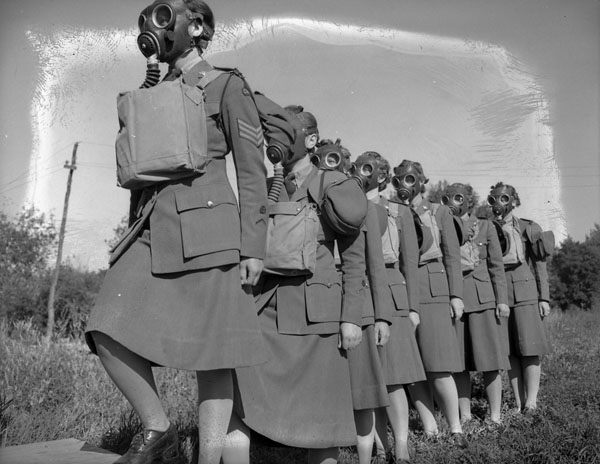
Her mission in Italy
By the time Oakley became an officer, the Canadian Government had authorized the creation of the Canadian Women’s Army Corps. While most of the 22,000 women who joined CWAC served in Canada, Oakley was placed in charge of the first female unit to be stationed in mainland Europe. Indeed, in June 1944, Oakley led the first group of Canadian women on a mission in Italy. Her unit encompassed seventeen women from across Canada who were trained as wireless operators, stenographers, clerks, and switchboard officers. To this end, this mission appears to have been the second for the CWAC in Italy. Prior to Oakley’s mission, a first group of four women were sent on May 16, 1944, on a very specific mission: they were musicians sent to entertain the troops.
The primary mission of Oakley and his group was to replace employees at Canadian Headquarters who would be transferred further to the front. In reality, however, their responsibilities were varied. For example, when they arrived in Rome, one of their first tasks was removing the photographs of Mussolini from the former Air Ministry building.
Years before the war, Oakley spent several months in Italy learning Italian. Fluent with the language, she began teaching her colleagues Italian to help them navigate their way around. Outside of work, CWAC members had the opportunity to explore Rome, which had been liberated by Allied troops just a year earlier. Cynthia mentioned indeed that one of her most memorable experiences was attending midnight mass at St. Peter’s Basilica.
Another experience probably also left a lasting impression on her. There, Cynthia was reunited with her sister Helen after five years apart. According to press reports, Helen had enlisted in the US Women’s Army Corps and was also sent to Italy, to the same office as Cynthia. What a happy coincidence!
Right: An article about Cynthia Oakley in the February 16, 1945 edition of the Toronto Daily Star (source).
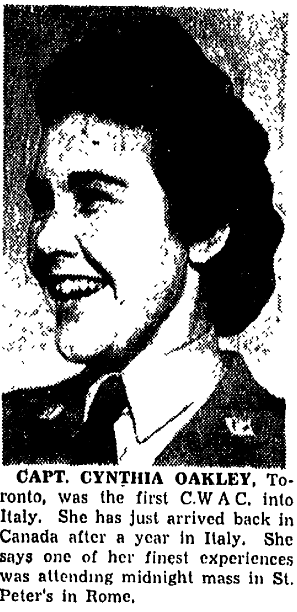
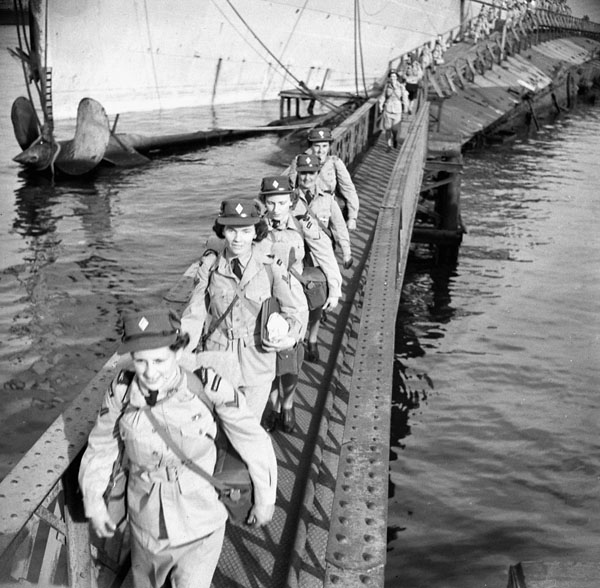
Paving the way
The captain spent a total of one year in Italy before returning to Canada. Her return marked the end of a five-and-a-half-year journey in Europe. However, she did not abandon her military career: upon her return, she was stationed in Ottawa at the Military Training Directorate.
During the Second World War, the work of CWACs, such as Cynthia Oakley, proved that women could play an active role in the military and paved the way for today’s female soldiers. Thanks to the initiative of these thousands of courageous women, the path to women’s inclusion in the military was finally opened.
Cover Photo: Members of the CWAC arrive in Italy (source: Galt Museum & Archives on The Commons).
Re-printed here with the permission of Valour Canada as part of a collaboration between JMS and Valour Canada. To see more articles like this one, check out their Military History Library. Text modified and enhanced by Julien Lehoux, September 15, 2025, for Je me souviens.
Sources:
- “Canadian Women’s Army Corps“, L’encyclopédie canadienne/The Canadian Encyclopedia.
- “The Canadian Women’s Army Corps, 1941–1946“, Musée Canadien de la Guerre/Canadian War Museum.
- “Women in the war: a Co-Lab challenge“, Bibliothèque et Archives Canada/Library and Archives Canada.
Cynthia Oakley was frequently covered in the Canadian media during the war. These articles can be viewed online, such as these:
- The Montreal Gazette, August 21, 1943 edition.
- The Winnipeg Evening Tribune, June 23, 1944 edition.
- The Norwalk Hour, November 29, 1944 edition.
- Saskatoon Star-Phoenix, May 19, 1945, edition.
Finally, read the original article here.
This article was published as part of our exhibition on the Italian Campaign: Through Vines and Mines. Visit our exhibition to learn more about the history of the Canadian soldiers and nurses sent to Italy!
